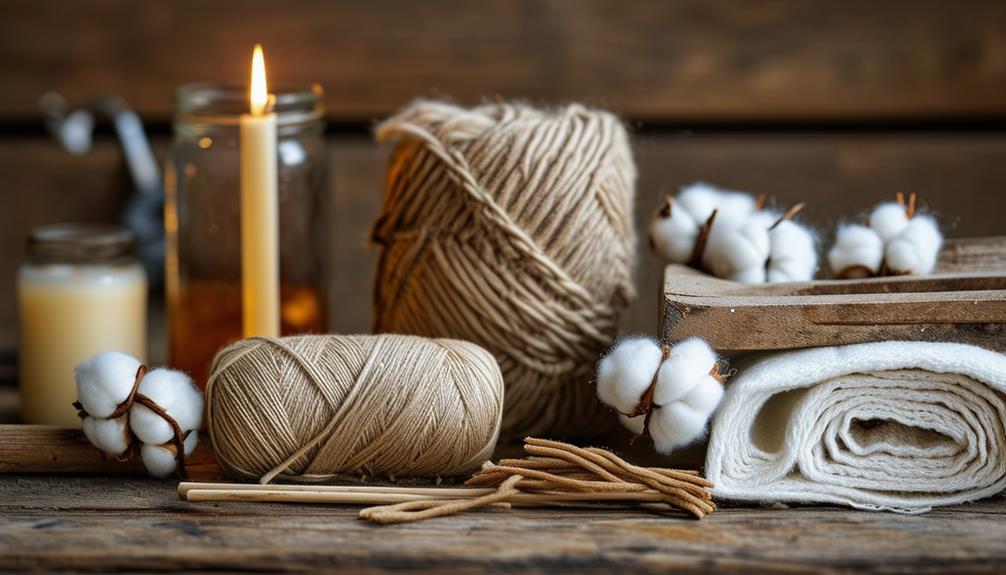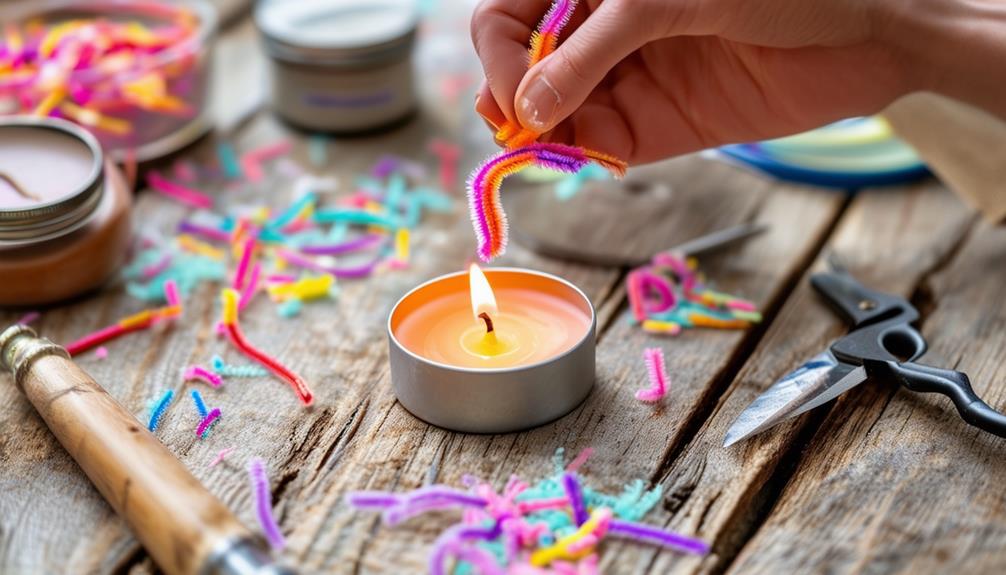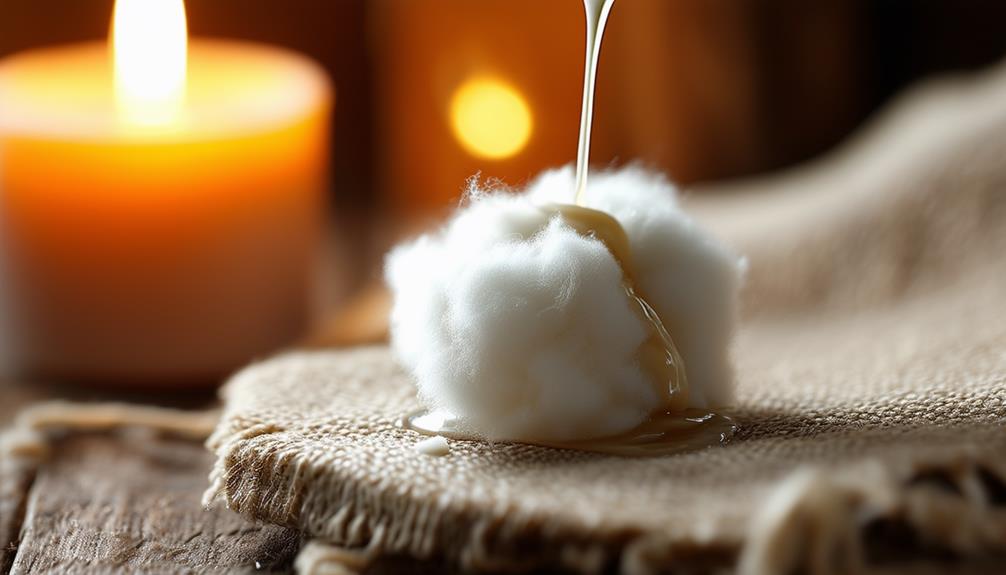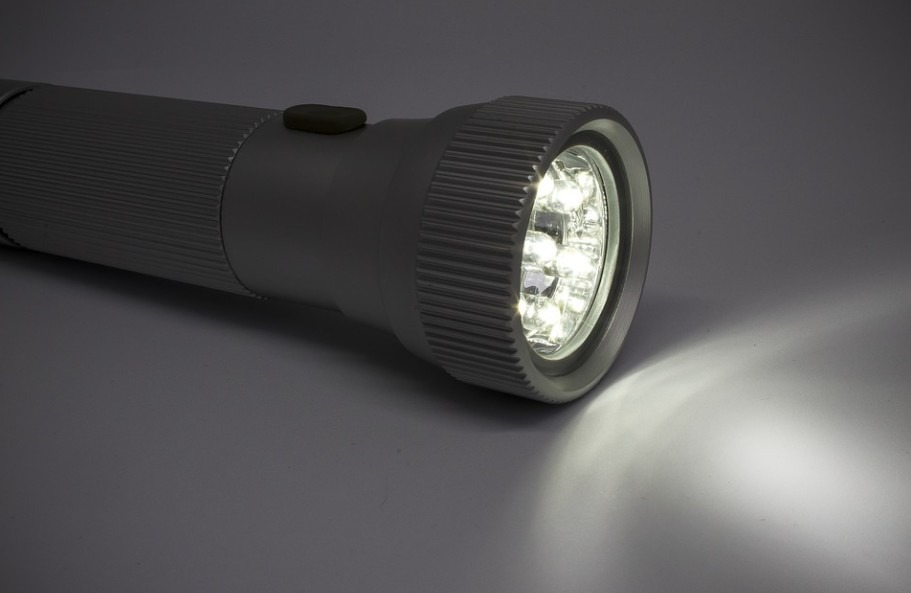What To Use As An Alternative Candle Wick?

When you're out of traditional candle wicks, your home offers various effective alternatives. Items like cotton twine and wooden skewers can serve your candle-making needs well.
Each alternative has its unique properties, but not all are equally suitable. For instance, have you considered using pipe cleaners or newspaper strips? These options come with their own challenges and are not as straightforward.
So, which alternative suits your needs best?
Cotton Twine
Cotton twine is a versatile and natural choice for creating candle wicks, ideal for DIY candle projects due to its natural fibers. Available in various thicknesses, cotton twine allows for customization to suit different candle sizes, making it an excellent option for those experimenting with homemade wicks.
Using cotton twine is straightforward. Simply dip it in melted wax to improve ignition and ensure a controlled burn. This simple step can significantly enhance the performance of your homemade wicks. Additionally, cotton twine is budget-friendly and readily available in most craft or hardware stores, making it accessible for everyone.
When using cotton twine as a candle wick, it's crucial to secure it firmly in the wax to prevent excessive flickering or irregular burning, which can affect the candle's longevity and quality.
Wooden Skewers
Wooden skewers can serve as a practical alternative for candle wicks when traditional wicks are unavailable. These skewers are often readily available in most households, making them a convenient choice for emergency candle making.
To enhance their burning efficiency, soak the wooden skewers in wax or oil before using them as wicks. This step helps them burn more steadily and reduces the risk of the skewer charring too quickly. Securely place the skewer in the candle wax to ensure it stays in position while burning, which is vital for consistent light and safety.
Experiment with different lengths and thicknesses of wooden skewers to find the best wick replacement for your specific candle. Thicker skewers might burn slower, whereas thinner ones could burn quicker, so a bit of trial and error may be necessary to achieve the desired outcome.
Using wooden skewers as an alternate candle wick is a straightforward and efficient method that can be a lifesaver when traditional wicks are unavailable. With a little preparation, you can keep your candles burning brightly even in unexpected situations.
Pipe Cleaners

You might be surprised to learn that pipe cleaners can serve as effective candle wicks. Their flexibility and ease of shaping, combined with their ability to hold wax well, make them a practical choice for DIY candle-making projects.
Let's explore how to create these wicks and the advantages they offer.
Crafting Effective Pipe Cleaner Wicks
Crafting effective pipe cleaner wicks for candles is a simple and customizable process, especially suitable for DIY enthusiasts. Pipe cleaners serve as excellent alternative wicks, ideal for emergency candles due to their availability in various colors and sizes.
To begin, take a pipe cleaner and twist one end around a pencil to provide stability. This makes the subsequent steps more manageable. Once secured, trim the pipe cleaner to fit your candle container, ensuring it sits properly and burns evenly.
Next, dip the trimmed pipe cleaner in melted wax. This crucial step helps the pipe cleaner maintain its shape and burn efficiently. Allow the wax-coated pipe cleaner to cool for a few minutes, then repeat the dipping process a couple of times to ensure thorough coating.
Advantages of Pipe Cleaner Wicks
Advantages of Pipe Cleaner Wicks
Pipe cleaner wicks offer a versatile and customizable solution for DIY candle makers due to their adaptability and flexibility. Their ease of shaping and manipulation allows them to be twisted or bent to fit various candle sizes and shapes, making them ideal for diverse creative candle projects.
A notable feature of pipe cleaners is their absorbent nature. They efficiently soak up melted wax, aiding in maintaining a steady flame during the candle's burning process. This absorbency ensures that homemade candles burn smoothly and consistently.
Additionally, pipe cleaners are available in a range of colors and thicknesses, allowing for customization to match your candle's aesthetic. Whether crafting a small tea light or a large pillar candle, you can find a pipe cleaner that suits your needs perfectly.
Newspaper Strips
Cutting newspaper into strips about 1 inch wide and 6-8 inches long can serve as an effective makeshift wick. Once you have your strips, roll them tightly to create a compact wick that burns more efficiently.
Next, soak the rolled newspaper strips in melted wax or cooking oil. This soaking process ensures that the wicks are fully saturated, which is crucial for a steady and sustained burn.
After the newspaper wicks are thoroughly soaked, insert them into your candle. It's important to monitor the wicks closely while they're burning, as they can burn rapidly if not properly saturated or if left unattended. Keeping an eye on them helps maintain a steady flame and prevents potential accidents.
Using newspaper strips as an alternative candle wick is a simple and cost-effective solution. Just remember to take necessary precautions, such as ensuring the strips are tightly rolled and fully soaked. By doing so, you'll achieve a reliable burn and a safer candle experience.
Monitor the flame, and you'll find this method both practical and efficient.
Cotton Balls

To prepare a cotton ball for use as a candle wick, unravel it and twist it into a long, thin strand.
Soak the strand in melted wax and let it dry completely. Once dry, it can be used as a wick in your candle.
When lit, the cotton ball wick burns steadily but may need more frequent trimming to maintain an even flame.
Preparation and Formation
Carefully unravel the cotton balls to create a makeshift wick for your candle. Gently pull apart the fibers until you have a long, thin strip. This process ensures that the fibers are loose enough to catch fire while still maintaining their integrity.
Once you have your strip, roll it tightly. Rolling the cotton tightly helps the wick hold its shape and burn more effectively, providing a better structure for consistent burning.
Next, focus on shaping your wick to be uniform in thickness for even burning. If it's too thick, it mightn't burn properly; if it's too thin, it could burn too quickly. Adjust the length according to the size of your candle.
Trimming the cotton wick to the desired length is crucial for efficient burning. Although you don't need to soak the wick immediately, soaking it in wax or oil later will enhance its burning capabilities. This preparation makes cotton balls a quick and accessible option for emergency candle wicks.
Soaking and Drying
Now that your cotton wick is prepared, soak it thoroughly in melted wax to enhance its burning efficiency. Begin by melting some candle wax in a heat-safe container.
Once the wax is fully melted, submerge your cotton wick completely, ensuring it's fully saturated. This step is crucial as soaking the cotton wick in wax improves its performance as a makeshift wick.
After soaking, carefully remove the cotton wick from the wax using tweezers or a similar tool to avoid burns. Place the wax-soaked wick on a sheet of parchment paper or a non-stick surface to dry.
Allow it to cool and harden completely; this drying process may take several hours. Proper drying is essential because lighting a damp or partially dried wick can result in poor performance or an uneven burn.
Using cotton wicks as an alternative candle wick is both quick and accessible. You may need to experiment with different sizes and amounts of cotton to find the perfect wick size for your specific candle. This trial-and-error process ensures you achieve the optimal burning experience.
Burning Characteristics
Using cotton balls as candle wicks can be a practical solution in emergencies, but they come with specific burning characteristics. Cotton wicks effectively draw up fuel and sustain a flame, making them useful when traditional wicks are unavailable. However, they tend to burn quickly and can produce more smoke compared to standard wicks. This necessitates close monitoring to ensure they don't burn out too fast or create a smoky environment.
| Pros of Cotton Wicks | Cons of Cotton Wicks |
|---|---|
| Easily accessible | Burn quickly |
| Draw up fuel effectively | Produce more smoke |
| Sustain a flame in emergencies | Require close monitoring |
| Quick makeshift solution | Less efficient than traditional wicks |
In situations requiring a quick lighting solution, cotton balls can be invaluable. However, given their rapid burn rate, frequent replacement may be necessary. The increased smoke can also be problematic, especially in confined spaces. Close monitoring is crucial to prevent safety hazards. While less efficient than traditional wicks, cotton balls can serve as a temporary substitute when no other options are available.
Old Fabric
Repurposing old fabric strips as candle wicks is an eco-friendly way to give new life to materials you already have at home. Instead of discarding old clothes or linens, cut them into strips and use them as wicks for your candle-making projects. Natural fabrics like cotton or linen are ideal choices because they burn cleanly and consistently.
Start by cutting your fabric into strips of suitable length and width for your candles. Typically, a width of about 1/4 inch works well. Ensure the fabric strips are clean and dry before use to avoid any residual chemicals or moisture affecting the burn quality of your candles.
Experimenting with different types of repurposed fabric can help determine which materials work best for your candles. Some fabric types might burn brighter or longer, so a little trial and error can go a long way.
Braided Strings

When seeking a reliable and steady burn for your candles, braided strings made from materials like cotton, jute, or linen serve as excellent wicks. Their braided structure ensures durability and helps maintain an even flame, leading to a consistent and even burn.
Using braided strings as candle wicks is both cost-effective and DIY-friendly. Materials such as cotton cord or jute are readily available at craft stores, making them convenient for homemade candles. Pre-soaking the braided strings in wax enhances their fuel absorption, resulting in cleaner burning.
Benefits of using braided wicks include:
- Consistent Burn: The braided structure provides a steady flame, ensuring even burning.
- DIY-Friendly: Easily accessible materials like cotton cord make this an ideal choice for homemade candles.
- Cost-Effective: Affordable and widely available, braided strings are a budget-friendly option.
- Optimized Performance: Pre-soaking in wax improves fuel absorption and minimizes soot production.
For your next candle-making project, consider using braided strings for a reliable, clean, and consistent burn.
Wooden Wicks
Wooden wicks offer a natural and steady burn, making them a distinctive choice for candle makers. These wicks are crafted from natural wood materials such as pine, willow, or fir, giving your candles an organic feel.
If you're looking for a wick that burns steadily and uniformly, a wooden wick is an excellent option. Unlike traditional cotton wicks, wooden wicks don't crack or run while burning, ensuring a consistent flame throughout the candle's life.
To optimize their performance, wooden wicks are often bound with cotton for added stability, making them easier to use and helping to maintain their structural integrity. When you incorporate wooden wicks into your candle-making process, you're adding a unique touch that sets your candles apart.
The natural wood materials not only contribute to a steady burn but also provide a rustic and elegant appearance. Using wooden wicks can elevate your homemade candles to a new level of craftsmanship. They're perfect for creating a cozy ambiance and are sure to impress anyone who sees or uses your candles.
Paper Clips
In an emergency, you can transform a simple paper clip into a makeshift candle wick. This improvised solution is useful when you lack a traditional wick but still need illumination. Here's how to do it:
- Accessibility: Paper clips are common office supplies and are usually easy to find.
- Ease of manipulation: You can easily twist and shape a paper clip into a functional wick.
- Cleanliness: Ensure the paper clip is free from any coatings or debris.
- Safety: Paper clips don't burn as efficiently or cleanly as regular wicks, so exercise caution.
First, straighten the paper clip and bend one end into a small loop or spiral to help it stay upright in the candle wax. Check that the paper clip is clean and free of any plastic coating to avoid harmful fumes.
While this temporary wick can provide light in an emergency, it won't burn as smoothly as a regular candle wick.
Always monitor the burning paper clip closely. Being metal, it can become very hot and pose a burn risk or potentially tip over. Exercise caution and never leave it unattended.
Orange Pith
Orange pith can serve as a natural wick, offering a sustainable alternative to conventional options. By simply drying the pith, it becomes ready for use in candle-making projects. It burns steadily, making it suitable for emergency candles or creative DIY endeavors.
Natural Wick Properties
Orange pith offers an innovative and sustainable alternative for candle wicks due to its fibrous and absorbent nature. This natural material can be used immediately after drying, requiring minimal preparation. When seeking an eco-friendly and creative option for DIY candle making, orange pith is an excellent choice.
The fibrous structure of orange pith efficiently draws up fuel, ensuring a steady burn. Its absorbent properties support a consistent flame, making your homemade candles both functional and aesthetically appealing. Here are the key benefits of using orange pith as a candle wick:
- Sustainable: Orange pith is a natural byproduct, reducing waste and promoting eco-friendly practices.
- Efficient: Its fibrous and absorbent qualities enable a steady and reliable burn.
- Unique: Offers a distinct and creative alternative to traditional wicks.
- Easy to Use: Requires minimal preparation, making the process simple and hassle-free.
Preparation and Drying
To prepare orange pith for use as a candle wick, ensure the material is thoroughly dried for a consistent and reliable burn. Begin by carefully extracting the orange pith from the fruit. Lay the pith out on a clean, dry surface, spreading it evenly to guarantee uniform drying. You can leave it in a well-ventilated area, away from direct sunlight, for a few days, or use a low-temperature oven to expedite the process.
Ensure the orange pith is completely free of moisture, as any residual dampness can disrupt the burn and potentially extinguish the flame. After drying, inspect the pith for any remaining wet spots. Fully dried orange pith is crucial for it to function effectively as a natural wick.
For optimal performance, use the dried orange pith immediately. This natural alternative adds a special touch to your DIY candle-making projects.
Burning Characteristics
The burning characteristics of dehydrated orange peel as a candle wick underscore its sustainable and consistent nature. When used in a DIY candle, the fibrous structure of the orange peel ensures a uniform flame, making it a reliable alternative wick that requires no additional processing.
Consider the benefits of using orange peel for your next candle-making project:
- Eco-friendly: Utilizing orange peel reduces waste and leverages natural materials.
- Consistent burn: The fibrous texture ensures a steady and even flame.
- Readily available: No extra processing is needed; it's ready to use once dried.
- Innovative DIY option: Adds a unique element to your homemade candles.
Combining orange peel with your preferred wax results in a practical and environmentally friendly homemade candle. The consistent flame produced by the orange peel wick ensures an even burn, making it an excellent choice for eco-conscious crafters.
Try this natural option for a distinctive and sustainable candle-making experience.
Conclusion
When you need a candle wick, don't stress. Numerous household items can serve as effective alternatives. From cotton twine to orange pith, each option brings a unique element to your candle-making process.
These materials aren't only versatile and sustainable but also cost-effective. Get creative and experiment with them. You'll find that making eco-friendly candles can be both enjoyable and rewarding.




